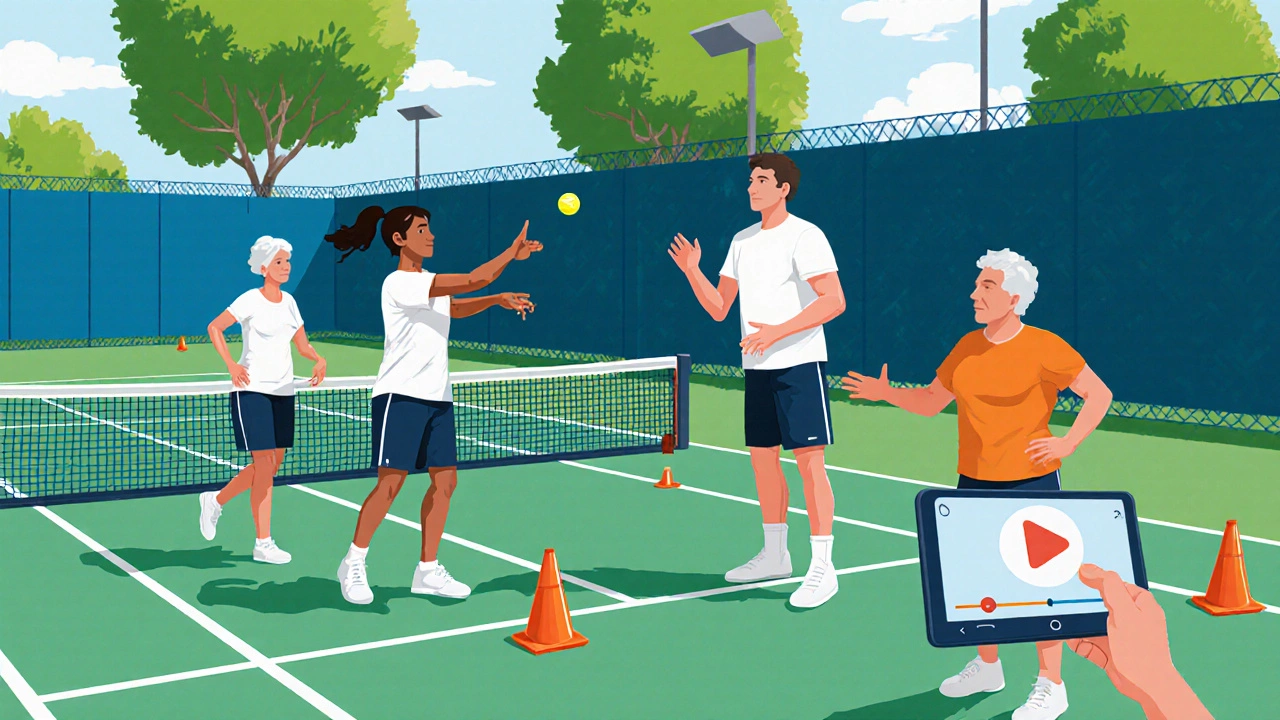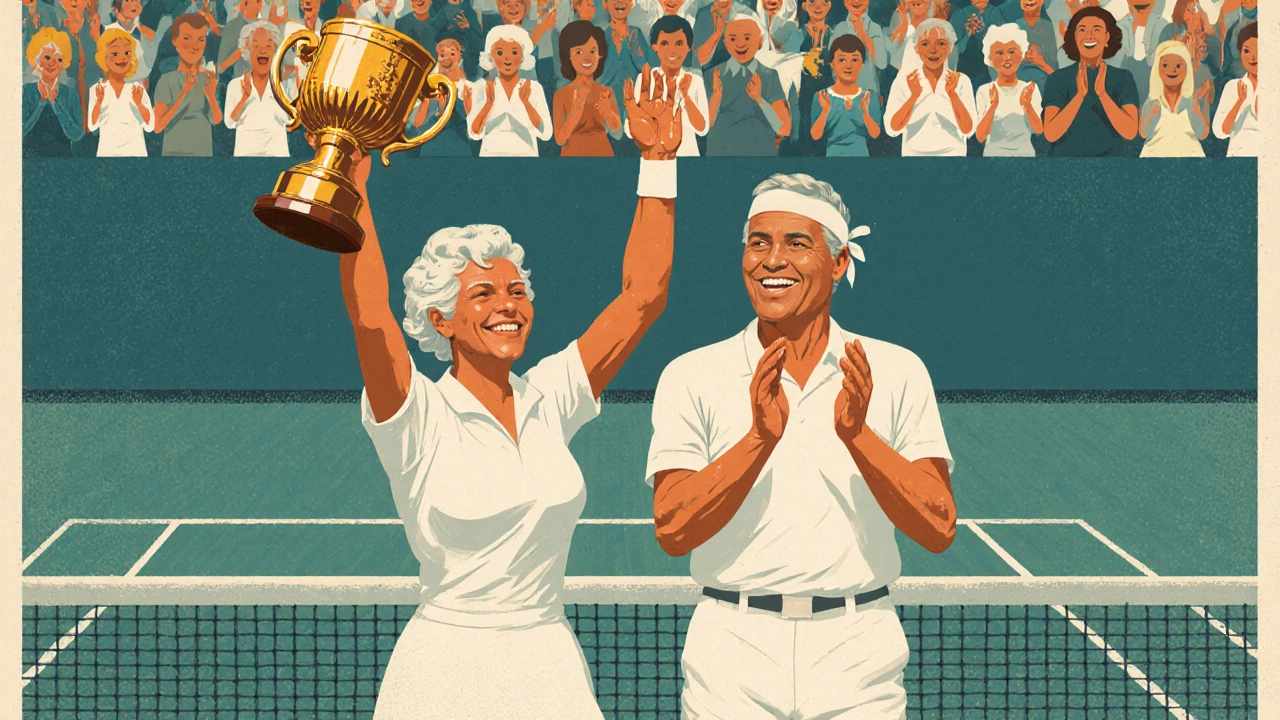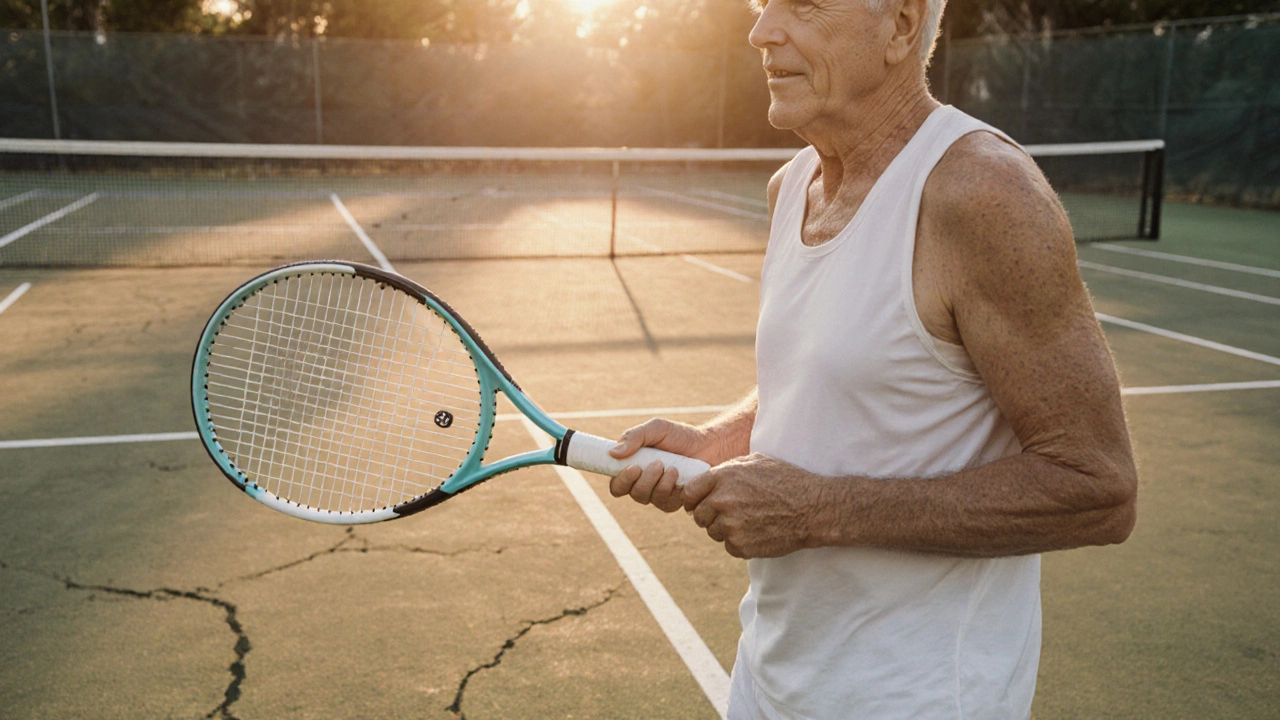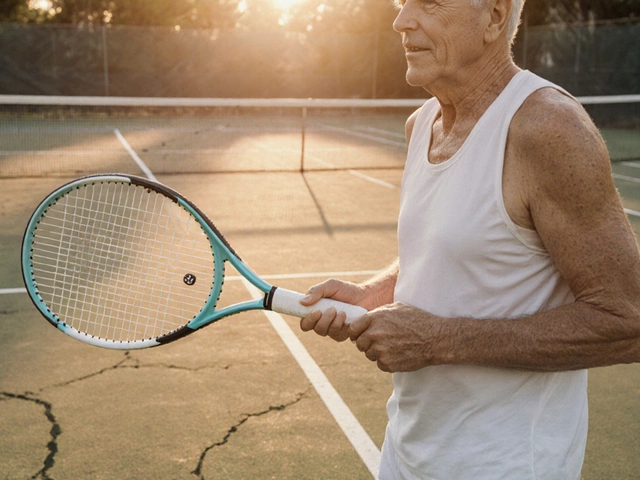Tennis Progression Calculator
Ever wondered if you can pick up a racket at 35, 45, or even 60 and still enjoy real progress? The short answer is yes - but the journey looks different depending on when you start. Below we break down the ages, the physical tweaks, training tips, and the mindset you’ll need to make a late start tennis successful.
Key Takeaways
- Starting tennis before age 12 gives the deepest skill foundation, but adults can still achieve solid recreational and competitive play.
- Physical fitness, flexibility, and injury prevention become the primary focus after 30.
- Consistent coaching, tailored drills, and realistic goal‑setting are crucial for late starters.
- There are inspiring examples of players who began after 40 and won senior tournaments.
- Choosing a supportive club and the right equipment can accelerate progress at any age.
Age and Tennis: What the Numbers Say
Tennis is a racquet sport that blends aerobic fitness, hand‑eye coordination, and strategic thinking. While many elite pros start as toddlers, the sport is uniquely adaptable to newcomers of any age.
Data from the United States Tennis Association (USTA) shows that:
- ~75% of junior tournament participants begin before age 12.
- ~20% of adult recreational players start between ages 20‑35.
- ~5% of senior league members first pick up a racket after 40.
This distribution tells us that the “optimal” window for peak competitive potential is early childhood, but there’s no hard ceiling. After age 30, the focus shifts from pure skill accumulation to preserving body health while refining technique.
Physical Factors That Matter After 30
Physical fitness refers to cardiovascular endurance, muscular strength, flexibility, and balance becomes the biggest gatekeeper for late starters. Here’s how each component influences your game:
- Cardio endurance: Longer rallies tax the heart. A 30‑minute interval run 3‑4 times a week can raise VO₂ max enough to sustain baseline rallies.
- Muscle strength: Core and leg power drive serves and groundstrokes. Simple body‑weight squats, lunges, and plank variations set a solid base.
- Flexibility: Shoulder and hip mobility reduce strain on the rotator cuff and prevent hamstring pulls. Incorporate dynamic stretches before play and yoga‑style static stretches afterward.
- Balance & proprioception: Late starters often lack the neuro‑muscular wiring younger players develop. Single‑leg stands, Bosu ball drills, and agility ladders improve footwork.
Injury risk also climbs with age, especially to the elbow (tennis elbow), shoulder, and knees. A preventive routine that includes foam rolling, rotator‑cuff strengthening, and regular physio check‑ups can keep you on court longer.

How to Train When Starting Late
Coaching professional guidance tailored to an adult’s learning curve is the single most effective accelerator. Look for coaches who specialize in adult beginners or senior programs. Typical session structure for a late starter:
- Warm‑up (10‑15 min): Light jog, dynamic arm circles, and mobility drills.
- Technical focus (30 min): One stroke per session - serve, forehand, backhand, volley - using video feedback.
- Movement drills (15 min): Cone patterns, side‑shuffle, split‑step timing.
- Play & apply (20 min): Controlled points, focusing on the shot practiced.
- Cool‑down (10 min): Stretching, breathing, and a brief debrief on progress.
Consistency beats intensity. Two 60‑minute lessons per week, combined with three self‑drilled 30‑minute practice sessions, yield steady improvement without overloading joints.
Real‑World Stories: Late Starters Who Made It
Senior athlete an adult who competes in age‑group tennis events examples illustrate what’s possible:
- John Miller, 48: Began playing at 42 after a workplace wellness program. Within three years he earned a #2 ranking in the USTA 45‑49 national doubles.
- Anna Singh, 55: Picked up tennis at 50 as a social activity. She now wins local over‑50 singles tournaments and coaches beginners twice a week.
- Ravi Patel, 62: Started after retirement; his focus on flexibility and low‑impact drills allowed him to compete in the senior circuit without major injuries.
What these stories share is a clear plan: regular coaching, targeted fitness, and realistic competition goals (often in senior leagues rather than open pro tours).
Choosing the Right Club & Equipment
Club a facility that offers courts, coaching, and social play selection matters. Look for these features:
- Adult beginner programs with small‑group lessons.
- Flexible court booking - evenings and weekends.
- On‑site physiotherapy or partnership with a sports clinic.
- Social leagues for ages 35+, 45+, and 55+.
Equipment-wise, a mid‑range racquet (27‑28inches, 300‑310g, open string pattern) balances power and control, reducing strain on the wrist and elbow. Pair it with a softer synthetic gut string to dampen vibration.

Common Pitfalls & How to Avoid Them
Late starters often stumble into these traps:
- Trying to emulate junior players: Youth athletes rely on natural speed. Focus on technique and placement instead of raw power.
- Skipping fitness work: Without baseline endurance, you’ll tire quickly and risk injury.
- Inconsistent practice: Progress stalls after a few lessons. Schedule at least two self‑drills weekly.
- Neglecting recovery: Older bodies need more rest. Incorporate sleep, hydration, and post‑play stretching.
- Choosing the wrong racquet: Heavy frames increase joint load. Opt for a lighter, maneuverable model.
By acknowledging these issues early, you can build a sustainable tennis habit.
Age vs Typical Skill Progression
| Starting Age | First 6 Months | 1‑2 Years | 3‑5 Years | Potential Competition Level |
|---|---|---|---|---|
| Under 12 | Basic strokes, footwork fundamentals | Junior tournament play, refined tactics | College‑level or higher | National junior rankings |
| 12‑20 | Grip, serve basics, rally consistency | High‑school varsity, regional leagues | College or national amateur | U18 or adult amateur events |
| 21‑30 | Fundamental strokes, cardio base | Adult recreational leagues, mixed doubles | State‑level senior circuits | USTA Adult 30+ rankings |
| 31‑45 | Technique focus, injury‑prevention drills | Consistent club play, senior league debut | National senior (45‑49) rankings | Senior national tournaments |
| 46‑60 | Low‑impact conditioning, basic rally skills | Regular senior league matches | State senior championships | USTA Over‑45 national events |
| 60+ | Gentle mobility work, light stroke practice | Social senior play, mixed‑age doubles | Local senior tournaments | Age‑group fun competitions |
Next Steps for Aspiring Late Starters
1. Assess your fitness: Schedule a quick health check, note any joint concerns.
2. Find a beginner‑friendly club: Use the criteria above to shortlist 2‑3 options.
3. Book a trial lesson: Many clubs offer a free first session; focus on the coach’s ability to tailor drills.
4. Set a realistic goal: Whether it’s playing a weekly match or entering a senior tournament, write it down and track progress monthly.
5. Build a support routine: Combine on‑court practice with 2‑3 weekly fitness sessions, stretching, and adequate rest.
Frequently Asked Questions
Can I start playing tennis after 50 and still avoid injuries?
Yes, provided you start with a gradual conditioning program, use a lightweight racquet, and prioritize warm‑ups and mobility work. Many clubs offer senior‑specific warm‑up classes that dramatically cut injury rates.
How many hours a week should a late starter practice?
Aim for 3‑4 sessions total: two coached lessons (60min each) and two self‑drilled practice slots (30‑45min). This balances skill acquisition with recovery.
Do I need a professional coach, or can I learn from YouTube?
Video tutorials are helpful for visual cues, but a coach can spot subtle technique flaws and design age‑appropriate drills. For adults, a blend of occasional coaching plus video review works best.
What is the best racquet for beginners over 40?
Look for a 27‑28inch frame, 300‑310g weight, and an open string pattern. Models like the WilsonBlade98 (300g) or BabolatPureDrive Lite provide power without stressing the elbow.
Are there senior leagues in India?
Yes. Cities like Bangalore, Delhi, and Mumbai host USTA‑affiliated senior circuits and local tennis associations that organize over‑35, over‑45, and over‑55 categories.

